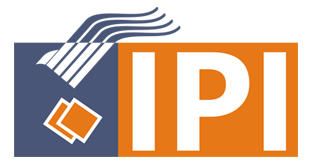Upaya Meningkatkan Hasil Belajar Kognitif Kimia Siswa dengan Menggunakan Metode Latihan (Drill)
(1) Universitas Pelita Harapan
(2) Universitas Pelita Harapan
(*) Corresponding Author
Abstract
Keywords
Full Text:
PDF (Indonesian)References
M. Afandi, E. Chamalah, dan O. P. Wardani. Model dan metode pembelajaran di Sekolah. Semarang: UNISSULA Press, 2013.
E. R. Dewi. “Metode Pembelajaran Modern dan Konvensional pada Sekolah Menengah Atas”. PEMBELAJAR J. Ilmu Pendidikan, Keguruan, dan Pembelajaran, vol. 2, no. 1, p. 44, 2018.
B. B. Yusuf. “Konsep dan indikator pembelajaran efektif”. Jurnal Kajian Pembelajaran dan Keilmuan, vol. 1, no. 2. pp. 13–20, 2018.
R. A. Marsita, S. Priatmoko, dan E. Kusuma. “Analisis Kesulian Belajar Kimia Siswa SMA dalam Memahami Materi Larutan Penyangga dengan Mmenggunakan Two-Tier Multiple Choice Diagnostic Instrument”. J. Inov. Pendidik. Kim., vol. 4, no. 1, pp. 512–520, 2010.
F. D. N. Pamenang. “Efektivitas Penggunaan Strategi Questions Student Have dalam Pemberian Llatihan Soal Stoikiometri Kimia”. J. Chem. Educ., vol. 8, no. 1, pp. 1–7, 2019.
T. Rahman. Aplikasi Model-Model Ppembelajaran dalam Penelitian Tindakan Kelas. Semarang: CV. Pilar Nusantara, 2018.
Harumi. “Penggunaan Metode Drill untuk Meningkatkan Motivasi dan Kemampuan Bercerita di Depan Kelas pada Siswa Kelas VII I SMP Negeri 6 Wonogiri Semester Genap Tahun Ajaran 2016/2017”. J. Pendidik. Konvergensi, vol. 5, no. 4, pp. 37–48, 2018.
A. R. Jarre dan S. Bachtiar. “Aktivitas dan Hasil Belajar Kognitif Siswa Meningkat Melalui Penerapan Model Jigsaw”. J. Biol. Pembelajarannya, vol. 4, no. 1, pp. 26–33, 2017.
A. E. Soponyono, K. Sinaga, dan J. S. Seleky. “Perbandingan Penerapan Metode Drill dan Resitasi terhadap Hasil Belajar Kognitif Matematika Siswa Kelas XI IPA di SMA ABC Cikarang”. JOHME J. Holist. Math. Educ., vol. 1, no. 2, pp. 81–92, 2018.
Y. B. Susabda. Mengenal & bergaul dengan Allah. Yogyakarta: Penerbit ANDI, 2010.
C. F. Goh, C. M. Leong, K. Kasmin, P. K. Hii, and O. K. Tan. “Students’ Experiences, Learning Outcomes and Satisfaction in E-learning”. J. E-Learning Knowl. Soc., vol. 13, no. 2, pp. 117–128, 2017.
N. Azizah dan S. Khanafiyah. “Pengaruh Komik Sains dalam Pembelajaran IPA terhadap Pengembangan Karakter Siswa di Kecamatan Semarang Tengah”. UPEJ Unnes Phys. Educ. J., vol. 3, no. 3, pp. 34–42, 2014.
Ramlah. “Penerapan Metode Pembelajaran Drill terhadap Hasil Belajar Kimia Siswa Kelas X ATPH 1 SMK Negeri 4 Gowa”. J. Chem., vol. 19, no. 1, pp. 1–7, 2018.
K. Siadi, S. Mursiti, dan I. N. Laelly. “Komparasi Hasil Belajar Kimia Antara Siswa yang Diberi Metode Drill dengan Resitasi”. J. Inov. Pendidik. Kim., vol. 3, no. 1, pp. 360–365, 2009.
M. Rathakrishnan, A. Raman, M. A. B. Haniffa, S. D. Mariamdaran, and A. B. Haron. “The Drill and Practice Application in Teaching Science for Lower Secondary Students”. Int. J. Educ. Psychol. Couns., vol. 3, no. 1, pp. 99–108, 2018.
DOI: http://dx.doi.org/10.30998/sap.v5i1.6501
Refbacks
- There are currently no refbacks.
Copyright (c) 2020 Evasari Kristiani Lase, Friska Juliana Purba

This work is licensed under a Creative Commons Attribution-NonCommercial-NoDerivatives 4.0 International License.
SAP (Susunan Artikel Pendidikan) indexed by:






Ciptaan disebarluaskan di bawah Lisensi Creative Commons Atribusi 4.0 Internasional.
View My Statis



 Accredited Certificate
Accredited Certificate
 Tamplate Journal
Tamplate Journal




















